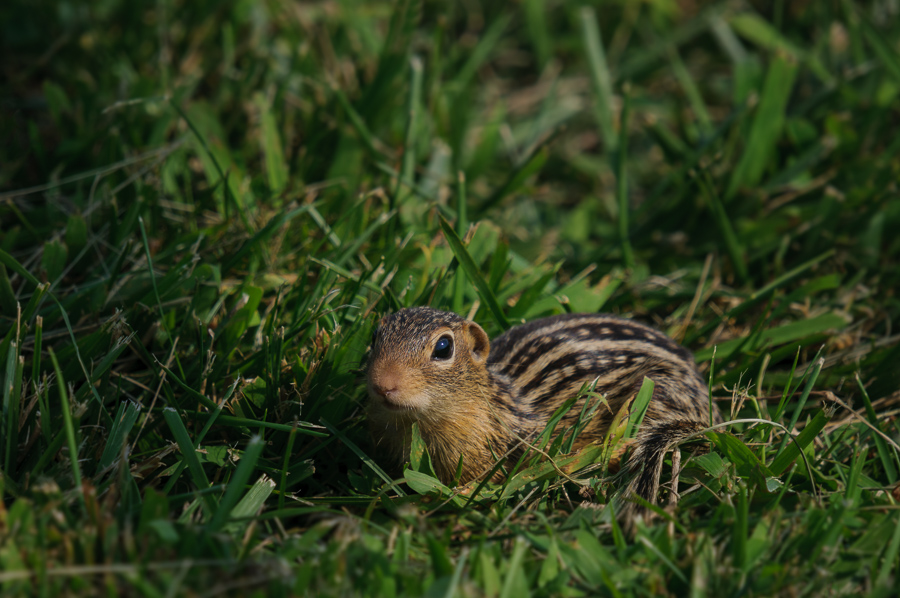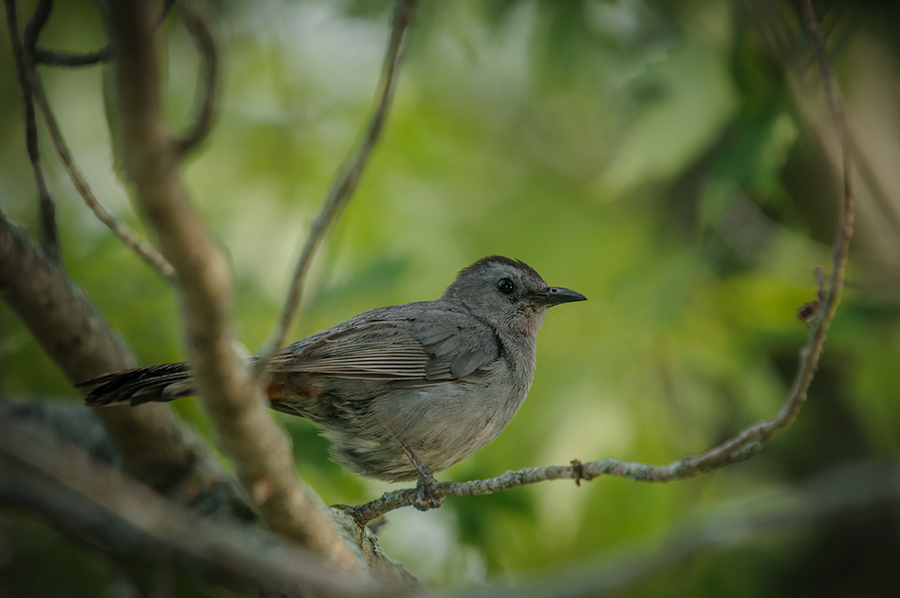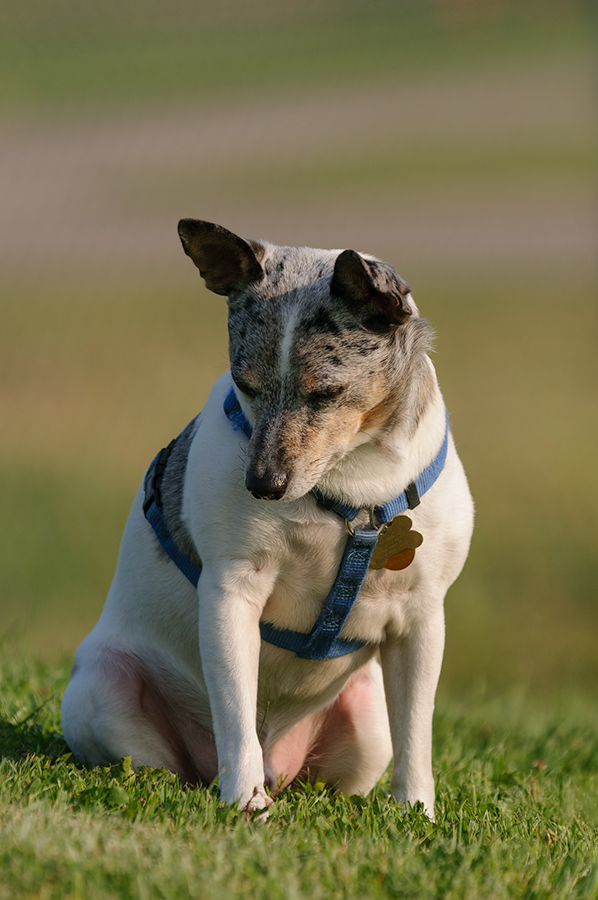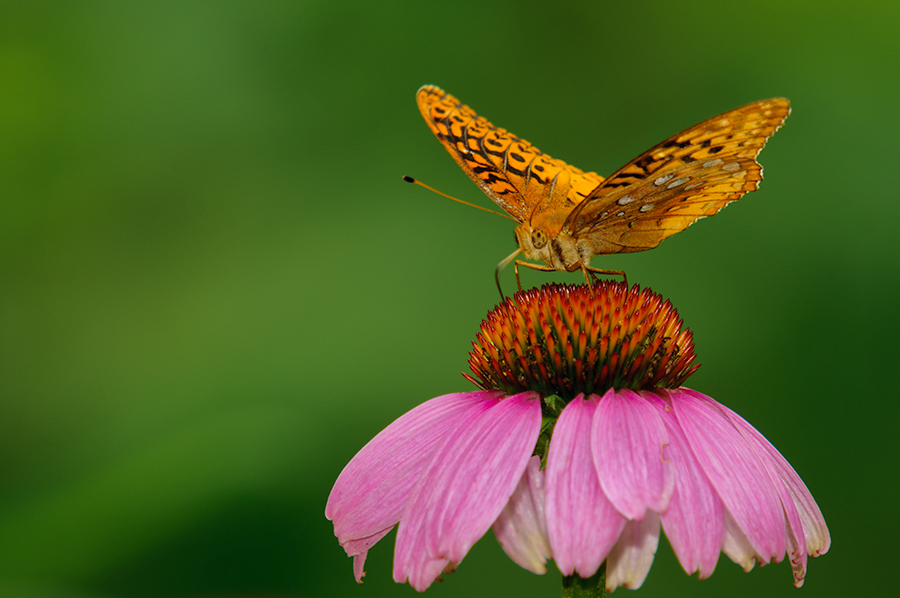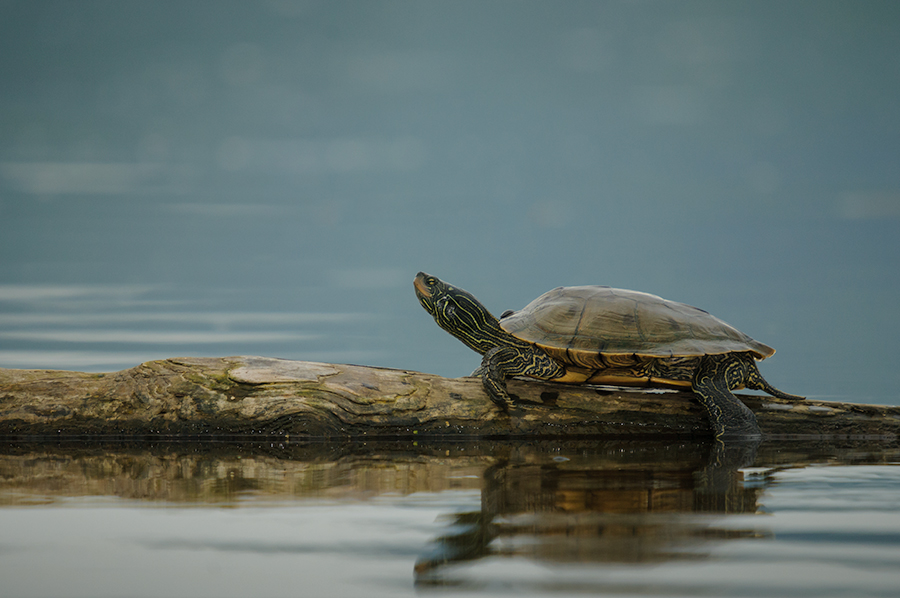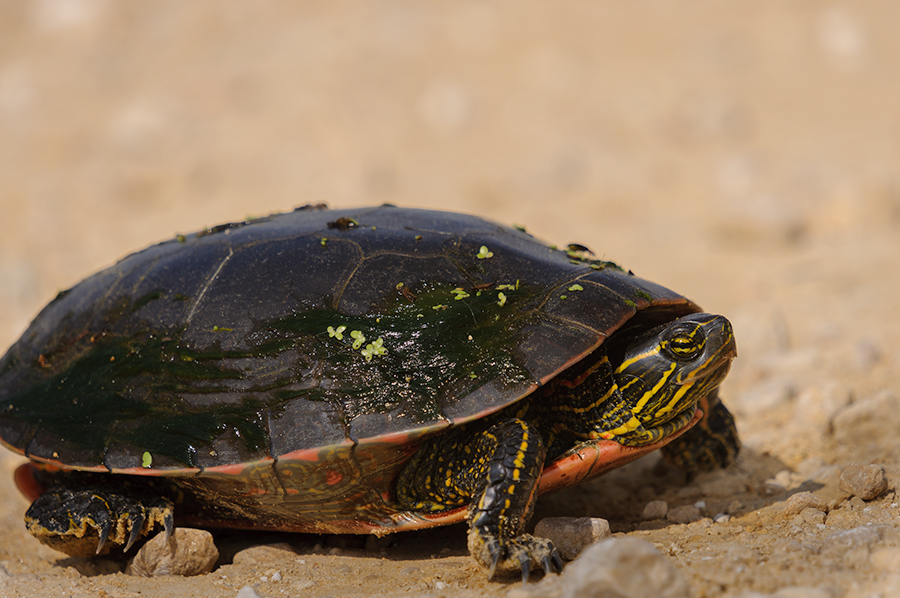
When I told you a few days ago that it will be quiet for the rest of the summer, because the little House Wrens had left their nest box, I did not know that in one of the other boxes at the edge of the woods another female was still sitting on her eggs. Well, since a few days we can hear their hungry chatter and the parents deliver insects and spiders every few minutes. We are very happy that we had four successful broods just within the range of our house this year. The parents approach the box always very carefully, especially if there is a guy with a tripod and camera not far from the nest.
I highly respect their privacy and use the full range of the long lens to make these images. By watching them for a while I knew that the old birds would always first land in a shrub nearby, then fly to a tree branch above the nest, before they finally go to the hole in the box with their food. Knowing the critters biology and habits leads to more photo opportunities and quite often to better results.








